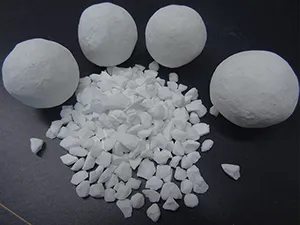The manufacturing process of pink fused alumina mirrors that of white fused alumina, with the addition of chromium oxide during smelting, resulting in a light purple or rose hue. The introduction of Cr3+ in pink fused alumina enhances its toughness compared to white fused alumina while maintaining similar hardness. When processing tougher materials, pink fused alumina demonstrates higher efficiency than white fused alumina, yielding superior surface smoothness. Ideal for processing high-toughness materials such as quenched steel, alloy steel, precision measuring instruments, and instrument components that demand high surface finish requirements.

Tabular alumina is a pure sintered alumina, thoroughly calcined without the addition of any additives such as MgO or B2O3. It boasts a coarse, well-developed α-Al2O3 crystal structure, with an Al2O3 content exceeding 99%.

Boron carbide is produced through high-temperature smelting of boracic acid and carbonaceous materials in electric furnaces. It boasts a theoretical density of 2.52g/cm3, a melting point of 2450°C, and a micro hardness of 4950kgf/mm2.

Brown fused alumina is produced by melting high-quality bauxite, iron filings, and anthracite in an electric arc furnace at high temperatures.
Black silicon carbide is produced by smelting quartz sand, petroleum coke (or coal coke), wood chips, and other raw materials in a resistance furnace.